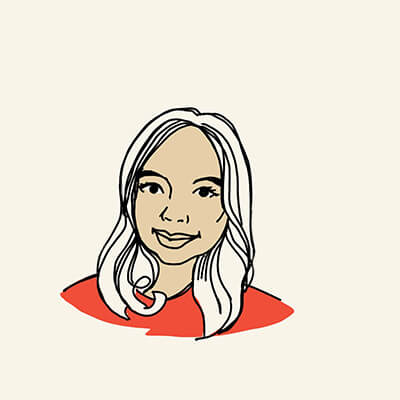There's a lifetime contribution limit to all RESPs of $50,000 per beneficiary. There is no annual limit. These contributions are not tax-deductible.

What is an RESP?
A Registered Education Savings Plan is a tax-deferred account where you can save for a child’s post-secondary education. One of the main perks – free money from government grants and bonds.
Flexible ways to use it
RESPs can be used on tuition at thousands of designated schools worldwide or anything else needed while enrolled, like food and supplies.
Free government grants
Over the years, free money from RESP government grants and bonds can add up to thousands. For government bonds, you don’t even need to contribute anything.
Set them up for success
Saving for your children’s education shows them you value their education and encourages saving. Help start their adult lives without a crushing debt.
RESP grants & bonds.
$1200
BC RESP grant
The BC Training and Education Savings Grant (BCTESG) provides eligible children in BC a free one-time $1,200 RESP grant. Apply with us between the child’s 6th and 9th birthday.
Up to $7,200
Canada Education Savings Grant (CESG)
The CESG will grant up to $500 a year, or up to $1,000 a year with unused grant room from previous years. It's based on what you contribute to the RESP annually up to the end of the year they turn 17; up to a lifetime total of $7,200. Low- and moderate-income families can qualify for more.
Up to $2,000
Canada Learning Bond (CLB)
A beneficiary whose family meets the income eligibility criteria can receive up to a lifetime maximum of $2,000. This includes $500 for the first year of eligibility and $100 every year up until the year they turn 15. CLB can be received without making any RESP contributions.
How an RESP works.
Open an RESP account
All you need to open an account is the child’s SIN number and date of birth. That means anyone can open an RESP account for a child—parents, guardians, grandparents, other relatives or friends. The child needs to be a resident when designated the beneficiary.
You will need to choose what type of RESP account to open. Your choices include:
- Individual plan: For one child who doesn’t have to be related to you. If the child doesn’t pursue post-secondary education, you can change the beneficiary if the RESP plan allows.
- Family RESP: For families with more than one child. One plan makes managing the investments easier. Earnings can be shared among the children, and the CESG maybe used by any beneficiary named in the RESP, to a maximum of $7,200.
Primary caregivers must provide their name and SIN on the grant application form to request the CLB and the Additional CESG; their adjusted family net income is used to validate eligibility.
Apply for RESP grants and bonds
We’ll help you file the applications necessary to receive the following grants and bonds:
- British Columbia Training and Education Savings Grant (BCTESG) – a one-time $1,200 RESP grant for eligible children residing in BC
- Canada Education Savings Grant (CESG) – annual grants that based on your contributions
- Canada Learning Bond (CLB) – annual bond for families that meet certain income eligibility requirements
Make contributions
You can, and we encourage you to, set up regular auto-deposits to grow your RESP and take advantage of the CESG.
Here’s the math:
If you contribute $2,500 a year, you’ll make the most of the CESG and receive the maximum grant of $500 a year up to the end of the year a beneficiary turns age 17 (or more for low and modest-income families).
Also note the RESP lifetime contribution limit is $50,000 and the CESG lifetime maximum is $7,200 per beneficiary.
Grow your investments
You’ll also need to make decisions about where to invest your RESP money. This is where our wealth management professionals can really help. We look at your family’s financial plan and use investment strategies that consider when you’ll need the money.
RESPs are tax-deferred, so as your investments grow in the account you don’t pay any immediate tax. As the money is withdrawn, the beneficiary will be taxed on the growth of the investments and any grants or bonds, often at a low tax rate because they’ll be students.
Get portfolio reviews
How often depends on what investments you choose and their risk levels. We recommend reviewing your investments at least twice a year.
Withdraw from the RESP
When your child is attending a qualifying school, they can start withdrawing from the RESP for tuition or other expenses. Your child doesn’t have to use their RESP right at 18. You can make contributions for 31 years and the account can stay open for up to 36 years.
Work with a wealth management professional to make a withdrawal plan, as withdrawal rules can be complicated.
Ask the pros.
Our pros with some advice on RESPs.
How much can I contribute to an RESP?
How do I receive the CESG?
Usually, your RESP administrator will automatically apply for the grant on your behalf. To qualify, your beneficiary must have a social insurance number, be a resident of Canada, and be under the age of 18. Some restrictions apply for RESP beneficiaries age 16 and 17. If you skip a contribution one year or open an RESP when a beneficiary is older, you can catch up some CESG room in later years. However, the maximum CESG that can be claimed in any year is $1,000 per beneficiary.
How is money withdrawn from an RESP?
Generally, you can make three types of withdrawals from an RESP:
1. Contribution withdrawals: As a the person who set up the RESP (known as the "subscriber"), you can withdraw your contributions at any time, subject to the terms of the RESP. Withdrawals of contributions are tax-free. You can opt to have contributions paid to the beneficiary directly for post-secondary education by requesting Post-Secondary Educational (PSEs) payments. If contributions are withdrawn while the beneficiary is not in post-secondary education, any CESG grants received on these funds must be returned to the federal government. But you can keep the income earned on the invested grant money.
Rules for withdrawing RESP funds are made by the federal government and your RESP provider. Be careful when choosing an RESP to understand all the restrictions on your plan. Some plans, such as scholarship plans, may not allow you to withdraw your contributions.
2. Educational Assistance Payments: Once a beneficiary has begun post-secondary education, they can withdraw RESP earnings, grants and bonds to cover eligible expenses, such as:
- tuition fees and textbooks
- school supplies, including computers
- room and board, and travel costs to and from home
These payments are referred to as Educational Assistance Payments (EAPs) and the beneficiary is taxed on the amount withdrawn. This may be at a very low rate, if at all.
To be eligible for EAPs, the beneficiary must be enrolled in a qualifying educational program that lasts at least three consecutive weeks and requires at least 10 hours per week on courses or program work. Correspondence courses may qualify. Part-time programs are eligible for EAPs if lasts at least three consecutive weeks where at least 12 hours per month on courses are required and the beneficiary is at least age 16. Most Canadian post-secondary institutions and programs, including correspondence courses, qualify. Certain foreign post-secondary institutions may also qualify, but these programs must be for at least 13 consecutive weeks.
EAP withdrawals are limited to $5,000 until the beneficiary completes 13 consecutive weeks in a qualifying full-time educational program.
3. Accumulated Income Payments: These are amounts from RESP investment earnings (on contributions, CESGs and CLBs) that can be payed to the subscriber if:
- the subscriber is a Canadian resident; and
- all the RESP's beneficiaries have died; or
- the RESP has existed for at least 35 years (and is not a specified plan); or
- the RESP has existed for at least 10 years, and all beneficiaries are at least 21 years old and not eligible for EAPs.
AIPs taken as cash are taxable income for the subscriber or joint subscriber, and are subject to an additional penalty tax of 20%. If the subscriber has unused RRSP contribution room, they may elect a tax-free transfer of up to $50,000 of AIPs to their RRSP or their spouse's RRSP.



View legal details
Qtrade Guided Portfolios is a division of Aviso Financial Inc.
* Mutual funds and other securities are offered through Aviso Wealth, a division of Aviso Financial Inc. Commissions, trailing commissions, management fees and expenses all may be associated with mutual fund investments. Please read the prospectus before investing. Unless otherwise stated, mutual funds, other securities and cash balances are not covered by the Canada Deposit Insurance Corporation or by any other government deposit insurer that insures deposits in credit unions. Mutual funds and other securities are not guaranteed, their values change frequently and past performance may not be repeated. Pooled Portfolios are distributed by Aviso Wealth. Referral fees, commissions, management fees, and expenses all may be associated with managed accounts or the investments therein. Managed accounts, and the investments therein, are not insured nor guaranteed, their values change frequently and past performance may not be repeated.
ᶲ Online brokerage services are offered through Qtrade Direct Investing, a division of Aviso Financial Inc.